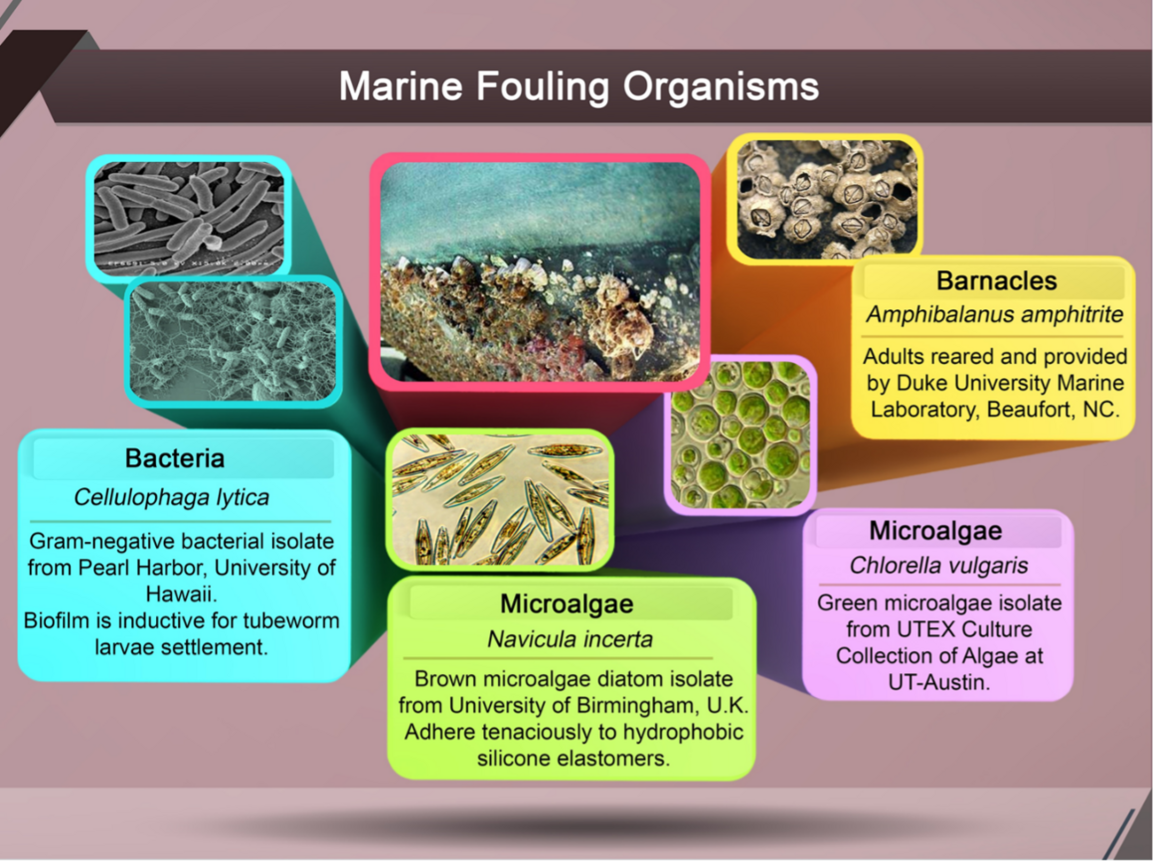Marine Fouling Organisms


A suite of relevant marine fouling organisms are maintained year round at NDSU for use in accelerated assays to characterize antifouling and fouling-release coating properties, including bacteria, brown and green microalgae, and adult barnacles.
Bacteria
Bacteria are unicellular microorganisms that have a rigid cell wall structure composed of peptidoglycan. They typically reside in a multispecies biofilm or “slime layer” in nature that can contribute up to a 25% increase in hydrodynamic drag on a ship’s hull. Recent evidence also suggests that bacterial biofilms can cue the settlement of other marine organisms, such as macroalgae and tubeworms. Two marine bacterial species, Cellulophaga lytica and Halomonas pacifica, are routinely utilized at NDSU to screen coating performance.
Microalgae
Algae consist of a wide variety of unicellular and multicellular plant-like organisms. NDSU utilizes unicellular brown microalgae, called diatoms, and green microalgae to characterize the performance of marine coatings toward slimes. Similar to bacteria, microalgae reside in the slime layer on surfaces submerged in the marine environment. However, their cell wall structure and composition is different than bacteria as it is predominantly composed of silica in the case of brown microalgae, and chitin and cellulosic polysaccharides with respect to green microalgae. NDSU employs the brown microalgae diatom isolate, Navicula incerta, and the green microalgae strain, Chlorella vulgaris to assess AF/FR coating performance.
Barnacles
Barnacles are one of the most commonly recognized shell fouling organisms found on surfaces submerged in the marine environment. Barnacles start off as nauplii or “swimmers” and metamorphose into cypris larvae or “settlers”. Once they find a suitable place to settle, cypris larvae metamorphose into the juvenile barnacles that spend the remainder of their life attached to a surface. Barnacles contribute to the “macrofouling” layer on surfaces submerged in the marine environment, which has been shown to contribute substantially to the hydrodynamic drag penalty, up to 75%, when attached to a ship’s hull. NDSU utilizes adult stage barnacles of the species Amphibalanus amphitrite to interrogate the effectiveness of coatings to prevent or mitigate attachment and/or adhesion of macrofouling.


